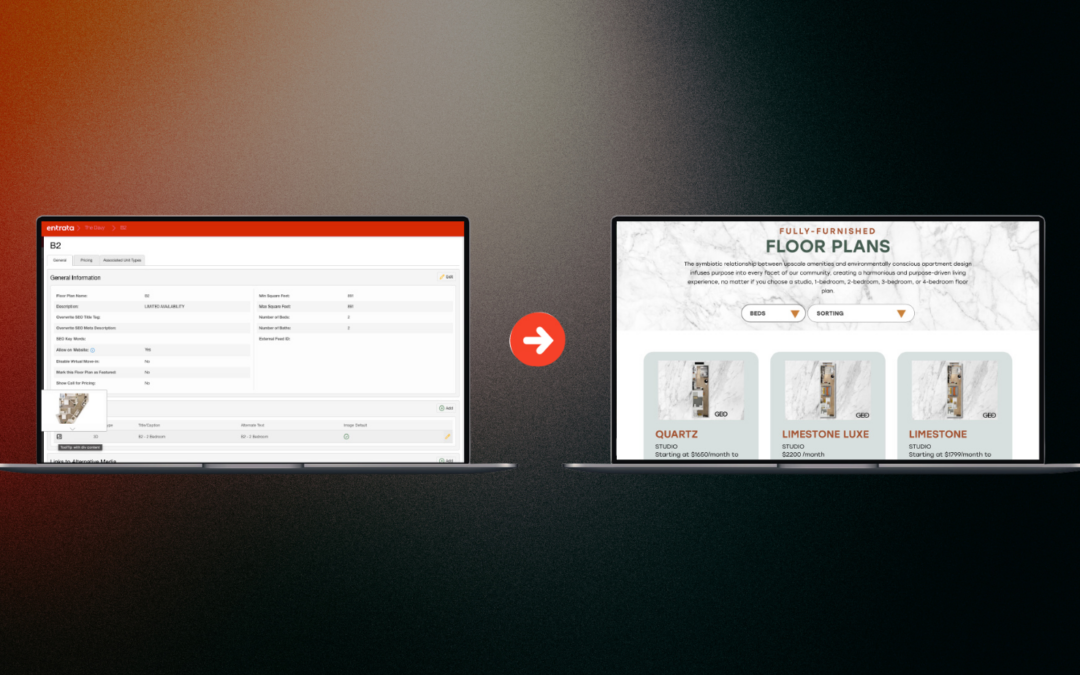
Revolutionizing Real Estate Websites: PeakMade’s Success Story
PeakMade Real Estate came to us needing a platform that allowed for a more streamlined approach to websites across their portfolio and understood that the user journey is different across their various markets.
So we did what we do best, implementing website templates optimized for Peak’s audiences that have significantly reduced website development time and include a custom Entrata integration that converts better than any leading property management software on the market.
when we say best, we mean it.
We wanted to not only simplify website development but also provide PeakMade’s portfolio with a marketing tool that amplified lead generation. Each template design was to be innovative, with thoughtful movement of content to engage the viewer while not overwhelming them.
Our adaptable designs show an immediate improvement in conversion rates in the PeakMade portfolio, with lower costs to acquire leads when comparing the performance of their pay-per-click campaigns year-over-year from pre-templated Threshold websites to post.
Claremont Collegiate Apartments in Claremont, CA. saw:
- A 213% increase in conversion rate
- A 65% decrease in cost per conversion
University Gateway in Los Angeles, CA. saw:
- A 1,607% increase in conversion rate
- An 83% decrease in cost per conversion
Impressed? See more for yourself.
a custom integration? you got it.
Up until now, Entrata’s API allowed only floor plan pricing to be pulled into websites. Threshold built a custom integration for Entrata that retrieves several data points such as property floor plan details, availability, pricing, specials, and general property promotions, leveraging automation and increasing website accuracy and sustainability.
Our custom PeakMade templated designs and integration go far beyond the current property website capabilities, allowing property managers to:
- Set a custom pricing label option for floor plans with the ability to customize individual floor plan specials and floor plan name options
- Introduce a rent pricing override option for quick and easy discounted pricing updates when needed
- Create specials and offers that automatically remove themselves from the website when they expire
What does this mean for the property management teams?
- Information refreshes automatically
- No more spending precious hours updating leasing information or submitting requests through Threshold
- User-friendly back-end access to make certain edits on their own, without having to wait the standard 24-72 hour agency request turnaround time
- Focus on leasing and know that the property’s website is accurate and up-to-date
we love results.
How fast do you need a website? Because Threshold and PeakMade launched several of these custom website templates in only 26 business days. But the results don’t stop there.
When switching their property websites from Entrata templated designs to Threshold’s customized solution, PeakMade saw some dramatic improvements.
Taking a sample of 10 property websites from 2022-2023, the PeakMade team saw the following changes:
- Average time on a website increased by 33 seconds across all sites
- An engagement rate increase of 7.74%
- A goal conversion rate increase of 77.61%
before you go.
The 411? Using the Entrata designs and limited plugins was costing PeakMade properties conversions. Their new Threshold website templates look better than the previous property websites and provide a much-improved user experience that’s consistently resulting in better website engagement and higher lease numbers.
Let’s propel you forward. Your place for your every marketing need, with us you can go a la carte or take all the carts. Talk to a Marketing Specialist today.

